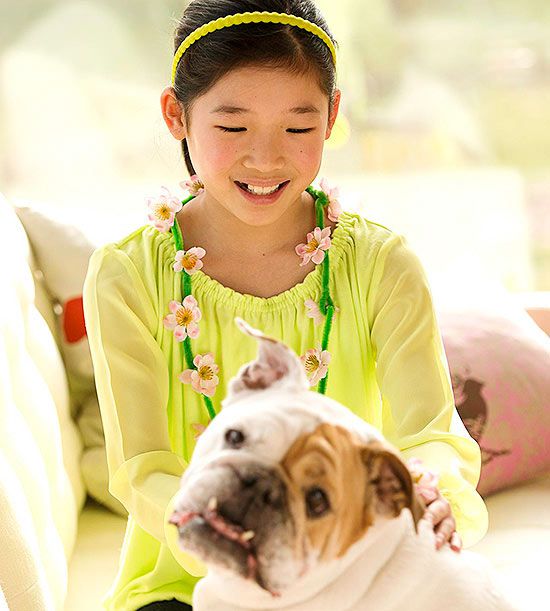
For original article click here
Not sure what moniker to give your pet? Read these guidelines on how to choose a name everyone will love.
One of the first responsibilities of being a pet owner is deciding what to name the newest family member. There are many benefits to having your kids help name a pet, even if they decide to give it a quirky name such as Princess Peanut Butter. The name you choose will say as much about you and your family’s relationship to your pet as it says about the animal, so it’s important to include everyone in the process. “I think it’s so important for children to have input — a name is so integral to how we relate to that pet,” says Laura Garber, head of behavior at the Town of Hempstead Animal Shelter and the owner of WoofGang LLC Dog Training. “Giving children the opportunity to name the pet — with some adult guidance — can be a great way for them to bond with and feel responsible for the family pet.” To help you get started, here are some tips on how you can decide on a pet name that everyone can live with!
Set Naming Guidelines
When your family starts brainstorming possible names, give guidelines to steer kids into making an acceptable choice, Garber suggests. Advise your child to pick a name that can “grow” with the pet as he ages. Names such as “Baby” or “Tiny,” for instance, might not fit well with a pet as it gets older and larger, but they might work well for a hamster or other small pet. Names like “Bones” for a skinny animal that might fill out or “Blondie” for one that could eventually get darker markings also wouldn’t have lasting power. Garber also recommends choosing a short, one- or two-syllable name, which will be more effective in getting the animal’s attention. If the child insists on a longer name, come up with a short nickname for everyday use.
Whether the name is long or short, also avoid names that might alienate people, such as “Cujo,” which could remind others of the killer dog from the movie of the same name. Plus, families should avoid any name that might be culturally, racially, ethnically, or religiously offensive in any way. You don’t want to end up insulting anyone, such as the vet or the neighbor across the street. It’s also smart to nix names that are tongue twisters and that can be confused with training cues or everyday words. “Mo,” for example, can be confused with “no,” “Tom” can be confused with “come,” and “Trey” can be confused with “stay.”
Consider Pop-Culture Icons
When trying to think of a name for your pet, there are many different sources of inspiration. If you want to choose a name that’s less traditional than “Fluffy” or “Spot,” pop culture offers plenty of options. If, say, Star Wars is your child’s favorite film, you could name a pet “Chewie,” “Han,” or “Leia.” Favorite characters from TV shows and books can also be a good fit. Even celebrities, sports teams, and musicians are possible sources for great pet names.
Get Inspired by Your Life
Outside of pop culture, your daily activities can also inspire names. If you have a favorite hobby such as collecting comic books, “Flash” or “Joker” might work well for your pet. Favorite foods and colors can also give you some fun ideas, says Mary Burch, Ph.D., director of the Canine Good Citizen program at the American Kennel Club (AKC). If your child has a favorite subject in school, explore that area for names as well. A history lover might like the presidential name “Lincoln,” while a science fan might enjoy a name drawn from an element on the periodic table, such as “Nickel.”
Create a List of Acceptable Names
If you’re worried that your child will become upset if she suggests a name that others veto, brainstorm a list of already-approved names with your partner. “If you want the dog to have a respectable name that you also like, go to a family meeting with a list of acceptable names from which everyone can choose,” Dr. Burch says, because young children can “go astray if given too much flexibility when naming a pet.” Bringing a selection of names for everyone to choose from can help move the conversation in the right direction. Let everyone in the meeting say which names on the list they prefer, and go from there.
Have Discussions at Family Meetings
It’s important to sit down and talk to your kids about how you as a family will decide what to name the pet, so get together at least once or twice to discuss the process and the possible names. You can do this either before or after you lay out naming guidelines, or you can mention names at the first meeting. You can even decide what the pet’s name will be in just one meeting, or you can hold more meetings to brainstorm and finalize ideas. Kids will be excited and feel involved when they know you are taking their ideas seriously.
Always Remember to Compromise
Ideally, everyone can agree on a name for the family’s new pet, but if you can’t, your best bet is to compromise. As the parent, you can choose the official name of the pet, but have your child choose “another name that can be the dog’s call name or nickname,” says Dr. Burch. Or involve your kids in making other choices, such as picking out new pet accessories and toys. But if you and your partner don’t care what the pet is called, let your child make the final choice. Whatever pet name you agree on, picking one together will ensure that everyone feels a connection with it.
Copyright © 2013 Meredith Corporation.

























